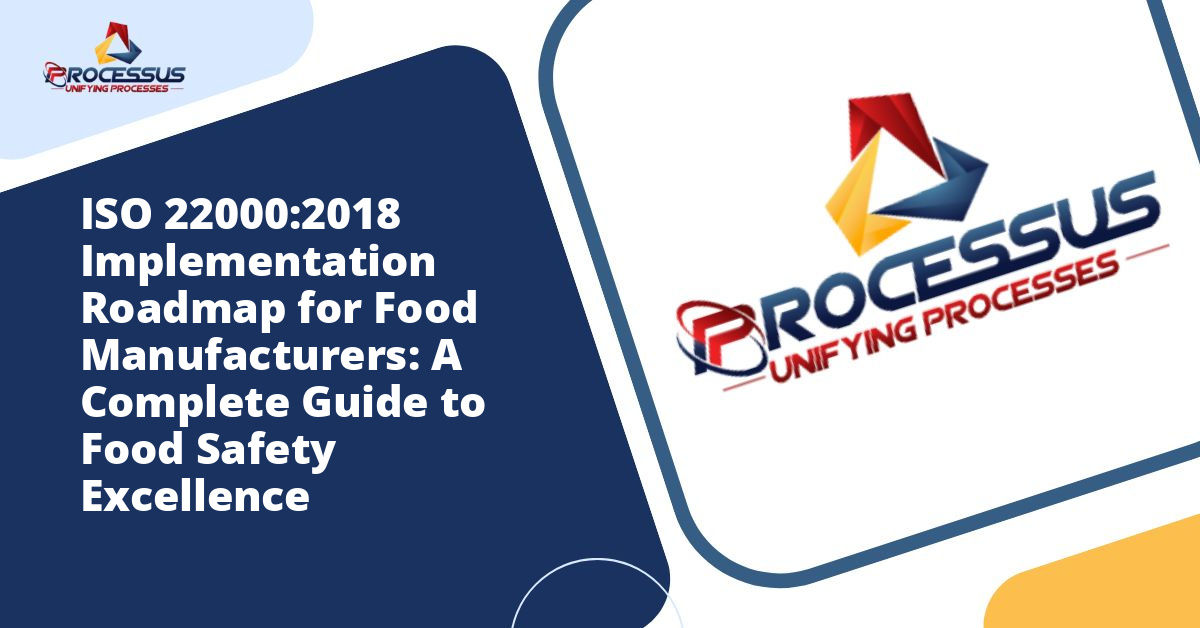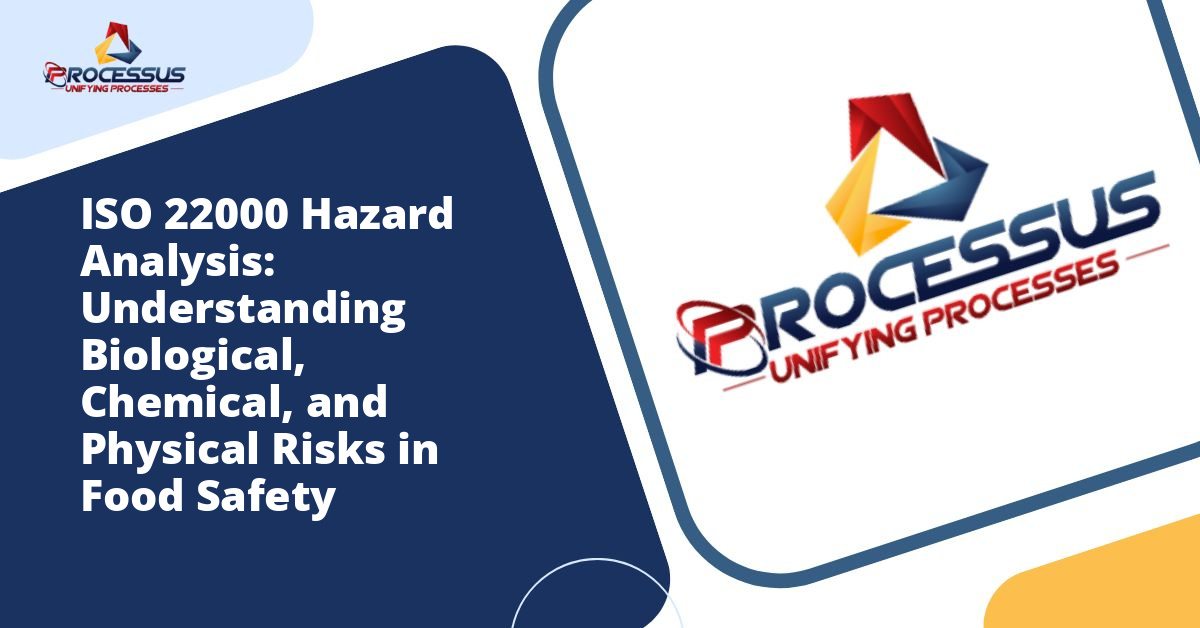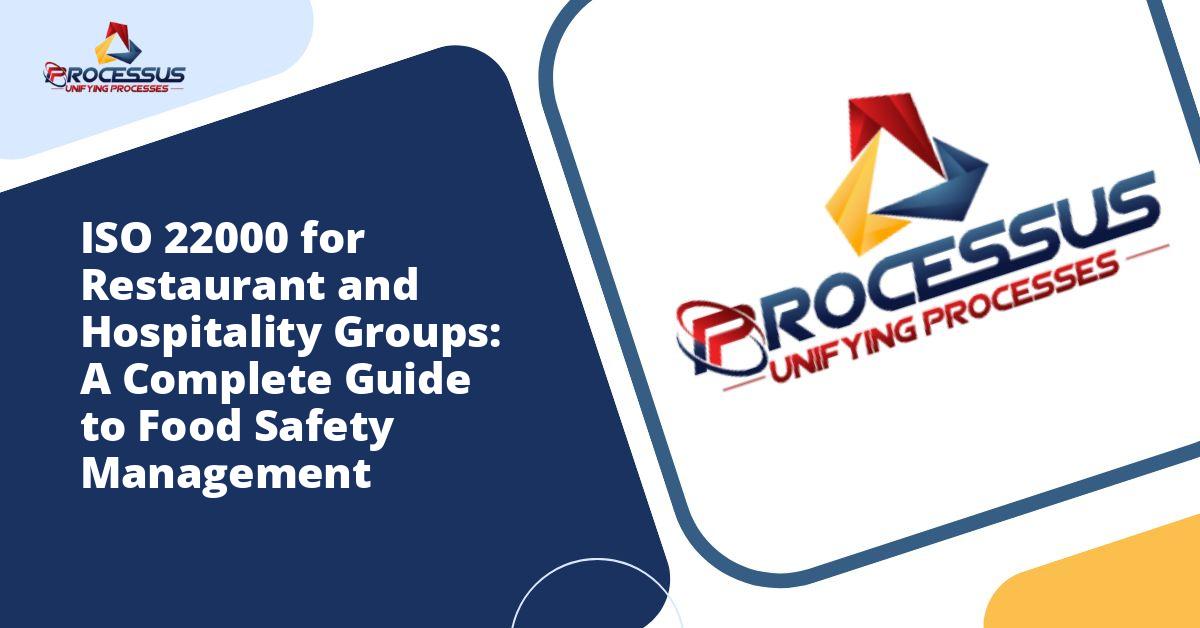Food safety has become a paramount concern for manufacturers worldwide, with consumers demanding higher standards and regulatory bodies enforcing stricter compliance measures. The ISO 22000:2018 standard represents a comprehensive framework designed to help food manufacturers establish robust food safety management systems. This detailed guide walks you through the complete implementation roadmap, providing practical insights and actionable steps to achieve certification success.
Understanding ISO 22000:2018 and Its Significance
ISO 22000:2018 is an international standard that specifies requirements for food safety management systems throughout the food chain. Unlike its predecessor, the 2018 version incorporates risk-based thinking and aligns with other ISO management system standards, creating a more cohesive approach to organizational management.
The standard applies to all organizations within the food industry, regardless of size or position in the food chain. From farmers and ingredient producers to food processors, packaging manufacturers, and distribution companies, ISO 22000:2018 provides a universal language for food safety management. This standardization facilitates better communication between stakeholders and strengthens the overall integrity of the food supply chain.
Food manufacturers who implement this standard demonstrate their commitment to producing safe products, protecting consumer health, and maintaining regulatory compliance. Beyond meeting legal requirements, certification builds customer trust, opens new market opportunities, and reduces the likelihood of costly recalls or safety incidents.
Key Changes in ISO 22000:2018
Before beginning the implementation journey, manufacturers must understand the significant updates introduced in the 2018 revision. The standard now follows the High-Level Structure (HLS) common to all ISO management system standards, making integration with other systems like ISO 9001 or ISO 14001 more straightforward.
Risk-based thinking has been explicitly incorporated throughout the standard, requiring organizations to identify risks and opportunities that could affect food safety management system outcomes. The concept of prerequisite programs (PRPs) has been clarified, distinguishing between basic PRPs and operational PRPs that are identified through hazard analysis.
The PDCA (Plan-Do-Check-Act) cycle now operates at two levels: covering the entire food safety management system and the operational processes within the HACCP principles. This dual application ensures continuous improvement at both strategic and operational levels.
Phase One: Initial Assessment and Gap Analysis
The implementation roadmap begins with a thorough assessment of your current food safety practices. This initial phase establishes a baseline understanding of where your organization stands relative to ISO 22000:2018 requirements.
Conducting a Comprehensive Review
Start by assembling a cross-functional team representing various departments including production, quality assurance, maintenance, procurement, and distribution. This diverse team brings different perspectives and ensures comprehensive coverage of all operational areas.
Review your existing food safety procedures, documentation, and practices against the standard’s requirements. Create a detailed checklist covering all clauses of ISO 22000:2018, noting areas where current practices align with requirements and identifying gaps that need addressing.
This assessment should examine your prerequisite programs, hazard analysis procedures, critical control points, traceability systems, recall procedures, and management review processes. Document findings systematically, as this information forms the foundation for your implementation plan.
Resource Allocation and Planning
Based on gap analysis results, determine the resources needed for successful implementation. This includes financial resources for infrastructure improvements, training programs, documentation development, and potential consultant support. Consider human resources required, both in terms of dedicated project team members and broader staff involvement.
Develop a realistic timeline that accounts for the complexity of required changes, availability of resources, and operational constraints. While some organizations achieve certification within six to twelve months, others may require eighteen months or longer depending on their starting point and organizational complexity.
Phase Two: Securing Management Commitment and Defining Scope
Leadership commitment is absolutely critical for successful ISO 22000:2018 implementation. Without genuine support from top management, the initiative will likely falter when faced with competing priorities or resource constraints.
Building the Business Case
Present a compelling business case to senior leadership that goes beyond compliance. Highlight benefits such as reduced product recalls, improved operational efficiency, enhanced market access, strengthened supplier relationships, and competitive differentiation. Quantify potential cost savings from reduced waste, fewer customer complaints, and improved process control.
Management must not only approve the project but actively participate in defining food safety policy, establishing objectives, and ensuring resource availability. Their visible commitment signals to the entire organization that food safety is a top priority.
Defining System Scope
Clearly define the scope of your food safety management system, specifying which products, processes, and sites will be covered. The scope should reflect your organization’s actual operations and be neither too broad nor unnecessarily limited. Consider your product categories, customer requirements, regulatory obligations, and food safety hazards relevant to your operations.
Document the scope statement clearly, ensuring it addresses the organization’s context, interested parties, and external requirements. This scope becomes a foundational document referenced throughout implementation and certification.
Phase Three: Establishing the Foundation
With management commitment secured and scope defined, begin establishing the foundational elements of your food safety management system.
Understanding Organizational Context
ISO 22000:2018 requires organizations to determine internal and external issues that affect food safety management system planning and outcomes. Conduct a thorough analysis of your operating environment, considering factors such as regulatory changes, market trends, technological developments, and stakeholder expectations.
Identify interested parties whose requirements affect your food safety management system. These typically include customers, consumers, regulatory authorities, suppliers, employees, and investors. Document their relevant requirements and expectations, ensuring your system addresses these appropriately.
Developing Food Safety Policy
Create a food safety policy that articulates your organization’s commitment to food safety, compliance with applicable requirements, and continuous improvement. The policy should be appropriate to your organizational context, provide a framework for setting objectives, and be communicated throughout the organization.
This policy statement becomes the guiding principle for all food safety activities and decisions. Ensure it reflects genuine organizational values rather than generic statements, making it meaningful and relevant to your specific operations.
Phase Four: Building Prerequisite Programs
Prerequisite programs form the foundation upon which the HACCP system is built. These programs establish basic environmental and operating conditions necessary for producing safe food.
Essential Prerequisite Programs
Develop comprehensive procedures covering critical areas including facility construction and layout, utilities and services, equipment suitability and maintenance, management of purchased materials, cleaning and sanitation, pest control, personnel hygiene, rework procedures, recall procedures, warehousing, and transportation.
Each prerequisite program should include specific procedures, responsibilities, monitoring activities, corrective actions, and record-keeping requirements. Ensure programs are documented clearly and accessible to relevant personnel.
While prerequisite programs establish general conditions, operational prerequisite programs (identified through hazard analysis) control specific hazards in the production environment. The distinction between these categories becomes clear during the hazard analysis process.
Phase Five: Conducting Hazard Analysis and Establishing HACCP Plan
The heart of ISO 22000:2018 is the systematic approach to identifying and controlling food safety hazards through hazard analysis and HACCP principles.
Assembling the Food Safety Team
Form a multidisciplinary team with comprehensive knowledge of products, processes, and potential hazards. Include members with expertise in production operations, quality assurance, microbiology, engineering, and other relevant disciplines. Appoint a qualified food safety team leader responsible for organizing team activities and ensuring the system is established and maintained.
The team must possess collective knowledge of HACCP principles, applicable regulations, food safety hazards, and control measures. Where internal expertise is lacking, consider external consultants or training to build necessary capabilities.
Conducting Hazard Analysis
Systematically identify all potential food safety hazards reasonably expected to occur in relation to product type, process, and actual processing environment. Consider biological, chemical, and physical hazards at each process step from raw material reception through finished product distribution.
For each identified hazard, conduct a hazard assessment to determine whether its elimination or reduction to acceptable levels is essential for producing safe food. Consider severity of potential health effects and likelihood of occurrence. This assessment determines which hazards must be controlled through the HACCP plan and which can be managed through prerequisite programs.
Determining Control Measures
Select appropriate control measures for each significant hazard. Control measures may include temperature control, time limits, pH adjustment, water activity reduction, preservative addition, metal detection, or other interventions that prevent, eliminate, or reduce hazards to acceptable levels.
Validate that selected control measures are capable of achieving intended food safety outcomes. Validation may involve literature review, experimental studies, mathematical modeling, or historical data analysis demonstrating measure effectiveness.
Establishing Critical Control Points
Apply a decision tree or similar systematic approach to determine which control measures require monitoring at critical control points (CCPs). Critical control points are steps where control is essential and failure to control would result in an unacceptable food safety risk.
For each CCP, establish critical limits based on validated parameters. Define monitoring procedures specifying what will be measured, how, when, and by whom. Develop corrective action procedures addressing both the immediate response when critical limits are exceeded and actions to prevent recurrence.
Phase Six: Documentation and Implementation
Transform planning into action by developing comprehensive documentation and implementing procedures across the organization.
Creating Documentation Structure
Develop a logical documentation hierarchy including policy statements, process descriptions, detailed procedures, work instructions, and forms. Documentation should be clear, accessible, and written in language understood by those who use it.
Maintain documented information required by the standard and determined necessary by your organization for food safety management system effectiveness. This typically includes hazard analysis results, HACCP plan, prerequisite programs, control measures, monitoring records, verification activities, and management review records.
Training and Competence Development
Implement comprehensive training programs ensuring all personnel understand their role in food safety management. Training needs vary by position but should cover food safety policy, relevant procedures, hazard awareness, monitoring techniques, and corrective actions.
Personnel performing activities affecting food safety must be competent based on appropriate education, training, and experience. Maintain records of training activities and evaluate training effectiveness through observation, testing, or performance assessment.
Rolling Out Procedures
Implement procedures systematically, allowing time for personnel to adapt to new requirements. Consider piloting procedures in limited areas before full-scale implementation, enabling refinement based on practical experience.
Communicate changes clearly, explaining not just what must be done but why. When personnel understand the food safety rationale behind procedures, compliance improves significantly.
Phase Seven: Verification and System Validation
Verification activities confirm that the food safety management system is working as intended, while validation demonstrates that control measures effectively achieve food safety outcomes.
Planning Verification Activities
Establish a verification schedule covering internal audits, analysis of verification results, validation of control measures, and management review. Verification activities should be conducted by personnel independent of those performing the activity being verified.
Internal audits systematically examine whether the food safety management system conforms to requirements and has been effectively implemented and maintained. Develop an audit program covering all system elements over a defined cycle, typically annually.
Validation of Control Measures
Before implementing control measures and when changes occur, validate that measures can effectively control identified hazards. Validation provides objective evidence that control measures are capable of consistently achieving intended outcomes.
Validation may involve scientific studies, expert consultation, published research, or trials demonstrating effectiveness. Document validation results and maintain records supporting the continued appropriateness of control measures.
Phase Eight: Continuous Improvement and Management Review
ISO 22000:2018 requires ongoing evaluation and improvement of the food safety management system through regular management review and corrective actions.
Management Review Process
Top management must review the food safety management system at planned intervals, ensuring its continuing suitability, adequacy, and effectiveness. Reviews should consider status of actions from previous reviews, changes in internal and external issues, information on food safety management system performance including nonconformities and corrective actions, audit results, verification activities, and opportunities for improvement.
Management review outputs include decisions on improvement opportunities, changes needed to the food safety management system, and resource needs. Document review inputs, discussions, and decisions, ensuring follow-up on required actions.
Handling Nonconformities
Establish procedures for responding to nonconformities, whether identified through monitoring, verification, or external feedback. Immediate responses address the specific issue, while corrective actions eliminate root causes to prevent recurrence.
Root cause analysis techniques help identify underlying factors contributing to nonconformities. Address systemic issues rather than treating symptoms, leading to genuine system improvement over time.
Phase Nine: Pre-Certification Audit Preparation
As implementation nears completion, prepare for the formal certification audit conducted by an accredited certification body.
Selecting a Certification Body
Choose an accredited certification body with experience in your industry sector. Accreditation by recognized bodies ensures the certification is credible and widely accepted. Consider factors such as auditor expertise, geographic presence, certification scope, and customer service.
Conducting Mock Audits
Perform internal mock audits simulating the certification audit experience. These audits identify remaining gaps, test document accessibility, and build confidence among personnel who will interact with external auditors.
Address findings from mock audits thoroughly, ensuring corrective actions are completed and verified before the certification audit. This preparation significantly increases the likelihood of first-time certification success.
Gathering Evidence
Ensure adequate records demonstrate system implementation and effectiveness. Certification auditors require objective evidence that requirements are met, not just documented procedures. Records should cover several months of operation, showing consistent implementation and management of the system.
Phase Ten: Certification Audit and Beyond
The certification audit typically occurs in two stages, beginning with documentation review and culminating in on-site assessment of implementation.
Stage One Audit
The initial stage reviews documentation to confirm that required elements are documented and the organization is ready for full assessment. Auditors examine the food safety policy, scope, hazard analysis, HACCP plan, prerequisite programs, and supporting documentation.
Address any findings from stage one before proceeding to stage two. This may involve documentation revisions, clarifications, or minor adjustments to procedures.
Stage Two Audit
During the comprehensive on-site audit, auditors assess implementation effectiveness through observation, interviews, and record review. They verify that documented procedures are followed, control measures function as intended, and the system achieves food safety objectives.
Respond professionally to audit findings, demonstrating commitment to addressing identified issues. Minor nonconformities can typically be resolved quickly, while major nonconformities may require more extensive corrective action before certification is granted.
Maintaining Certification
Certification is not a destination but the beginning of an ongoing journey. Maintain the food safety management system through continued implementation, monitoring, verification, and improvement. Surveillance audits occur periodically (typically annually) to confirm continued conformance.
Stay informed about standard updates, emerging hazards, technological advances, and regulatory changes that may affect your food safety management system. Proactive adaptation ensures continued effectiveness and demonstrates commitment to food safety excellence.
Common Implementation Challenges and Solutions
Understanding typical obstacles helps organizations anticipate and address challenges effectively.
Resistance to Change
Employees comfortable with existing practices may resist new procedures and requirements. Address this through clear communication about benefits, involvement in procedure development, adequate training, and leadership modeling of desired behaviors. Celebrate successes and recognize individuals who embrace changes positively.
Resource Constraints
Limited budgets and competing priorities can slow implementation progress. Build a compelling business case demonstrating return on investment, phase implementation to spread costs, leverage existing systems where possible, and consider external funding or customer support for certification efforts.
Documentation Overload
Organizations sometimes create excessive documentation that becomes burdensome to maintain. Focus on documents that add value, use visual aids and flowcharts where appropriate, integrate food safety requirements into existing procedures, and leverage technology for efficient documentation management.







